Object detection and splitting, clustering?
I'm currently working on an application that will split a scanned image (that contains multiple receipts) into individual receipt images.
Below is the sample image:

I was able to detect the edges of each receipts in the scanned image using canny function. Below is the sample image with detected edges:

... while my sample code is
Mat src = Highgui.imread(filename);
Mat gray = new Mat();
int threshold = 12;
Imgproc.cvtColor(src, gray, Imgproc.COLOR_BGR2GRAY);
Imgproc.blur(gray, gray, new Size(3, 3));
Imgproc.Canny(gray, gray, threshold, threshold * 3, 3, true);
List<MatOfPoint> contours = new ArrayList<>();
Mat hierarchy = new Mat();
Imgproc.findContours(gray, contours, hierarchy,
Imgproc.RETR_CCOMP,
Imgproc.CHAIN_APPROX_SIMPLE);
if (hierarchy.size().height > 0 && hierarchy.size().width > 0) {
for (int idx = 0; idx >= 0; idx = (int) hierarchy.get(0, idx)[0]) {
Rect rect = Imgproc.boundingRect(contours.get(idx));
Core.rectangle(src, new Point(rect.x, rect.y),
new Point(rect.x + rect.width, rect.y + rect.height),
new Scalar(255, 0, 0));
}
}
Now my problem is, I don't know how am I going to identify the 3rd receipt since unlike with the first 2 it is not enclosed in one rectangular shape which I will use as the basis for splitting the image.
I've heard that for me to extract the 3rd image, I must use a clustering algorithm like DBSCAN, unfortunately I can't find one.
Anyone knows how am I going to identify the 3rd image?
Thank you in advance!


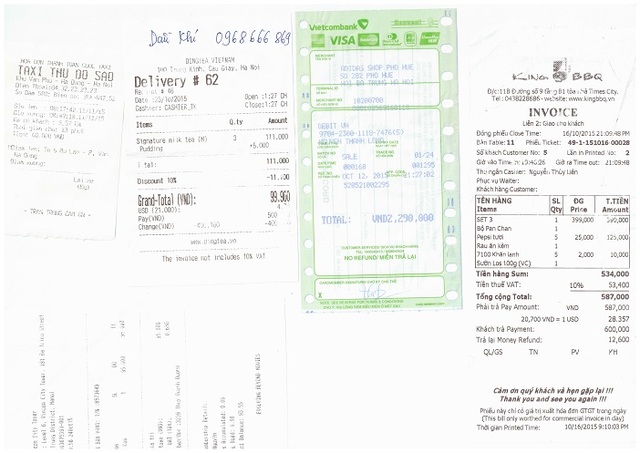
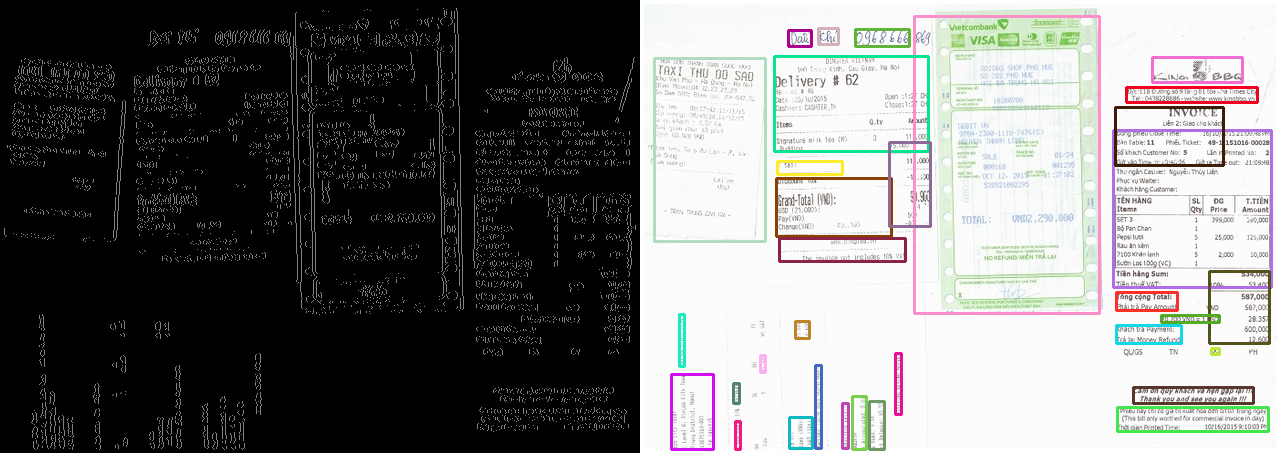
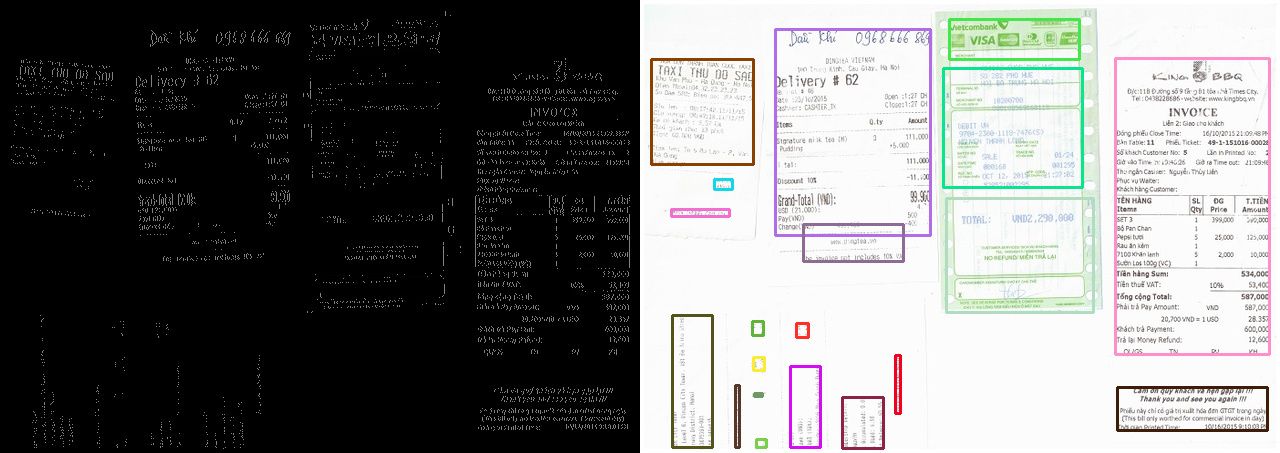
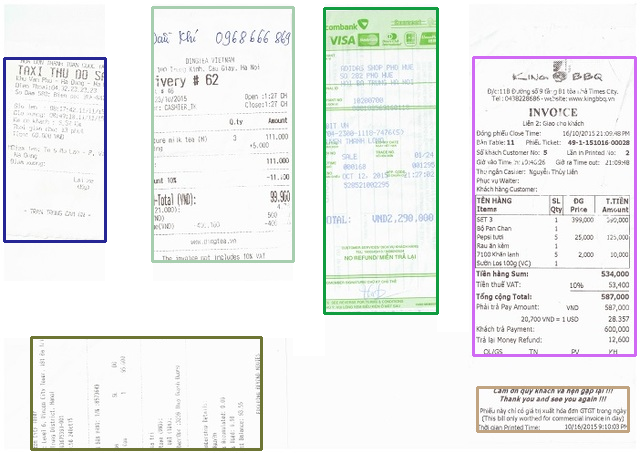
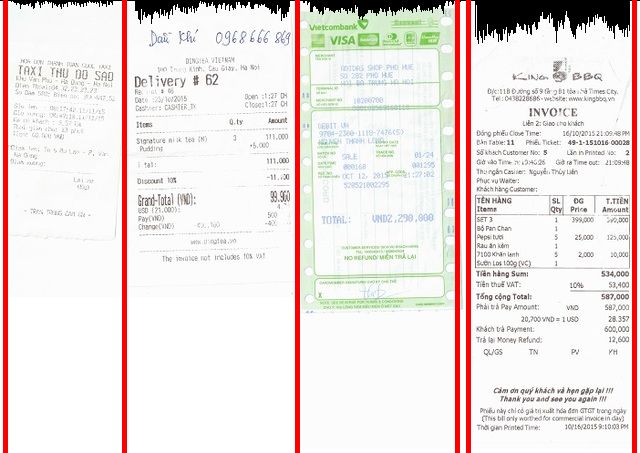
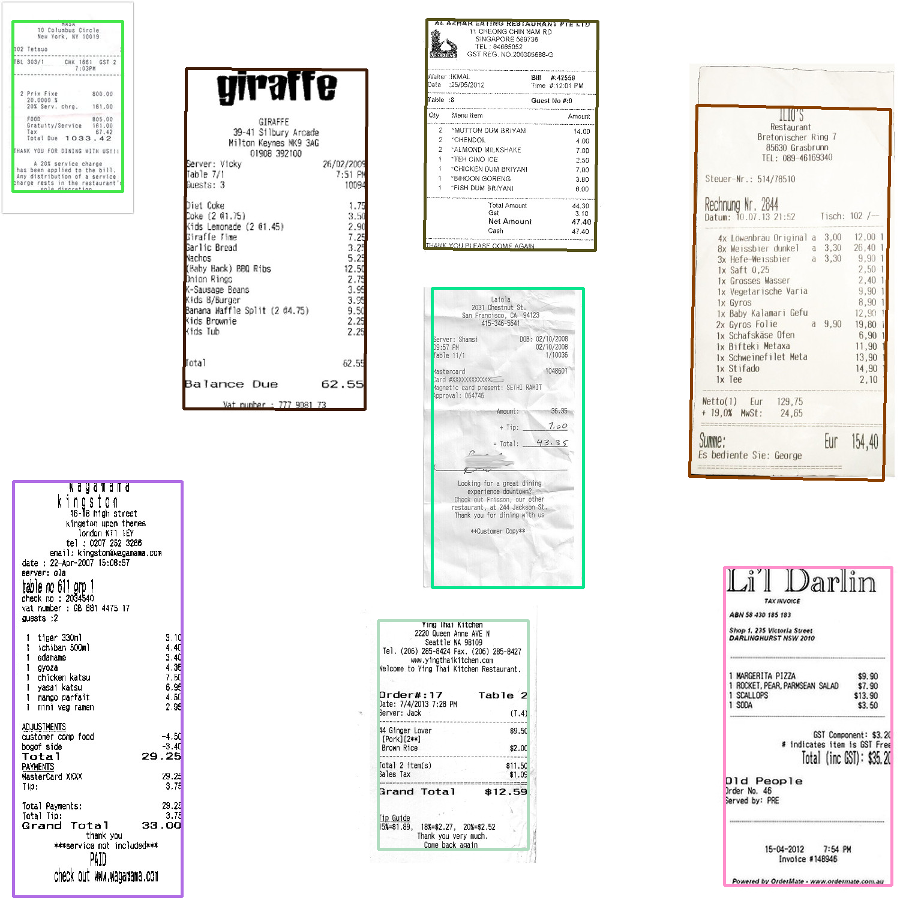
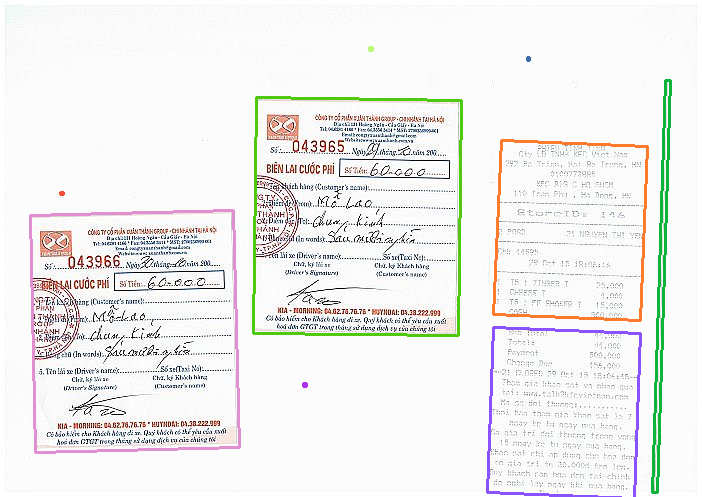
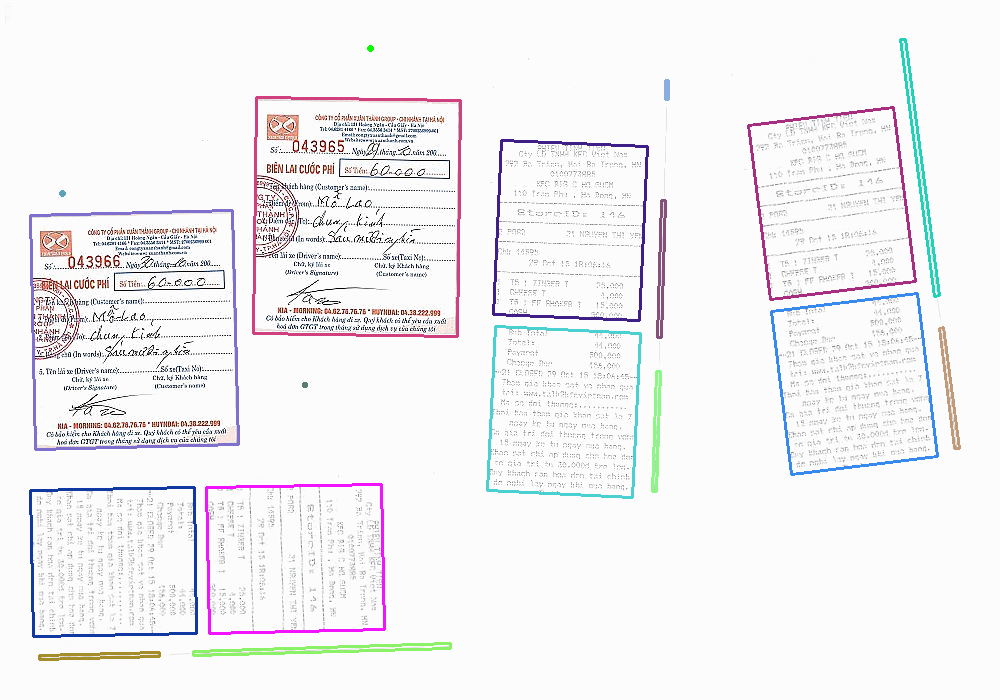
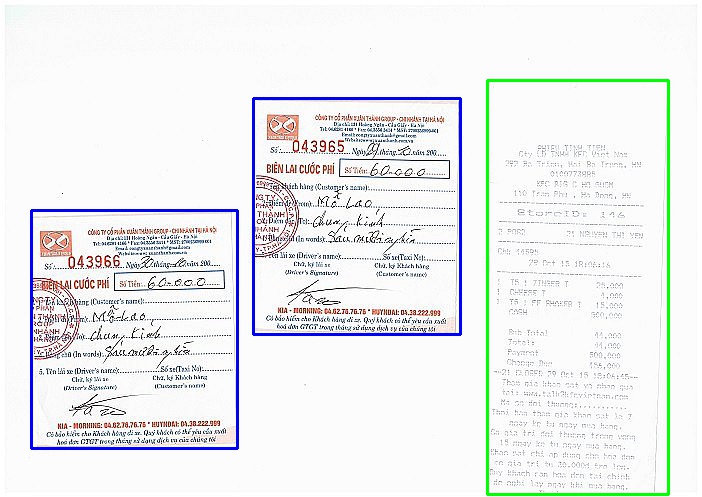
I am not able to transform to Java this line :
Is the bitwise_or from opencv ? But the API uses Mat as sources, not Rect. Any help please?
@Juampa, please do not post answers here, if you have a question or comment, thank you.
is a special contstruct (only available in c++, java does not have overloaded operators) denoting the union of 2 Rect's. (you'll have to code that manually, somehow)